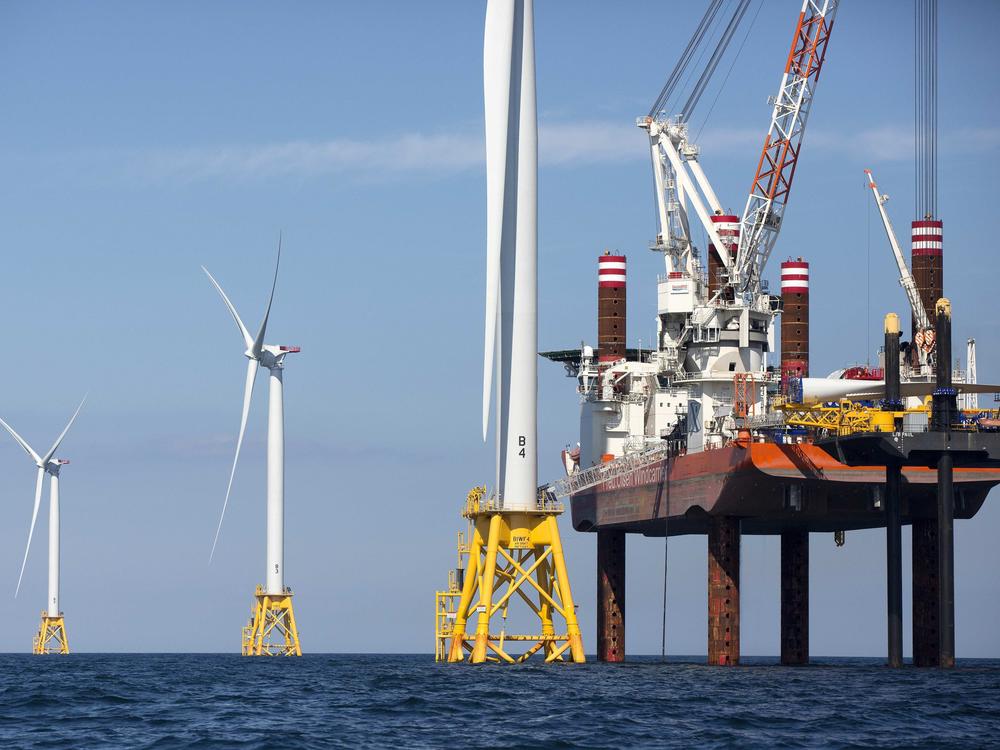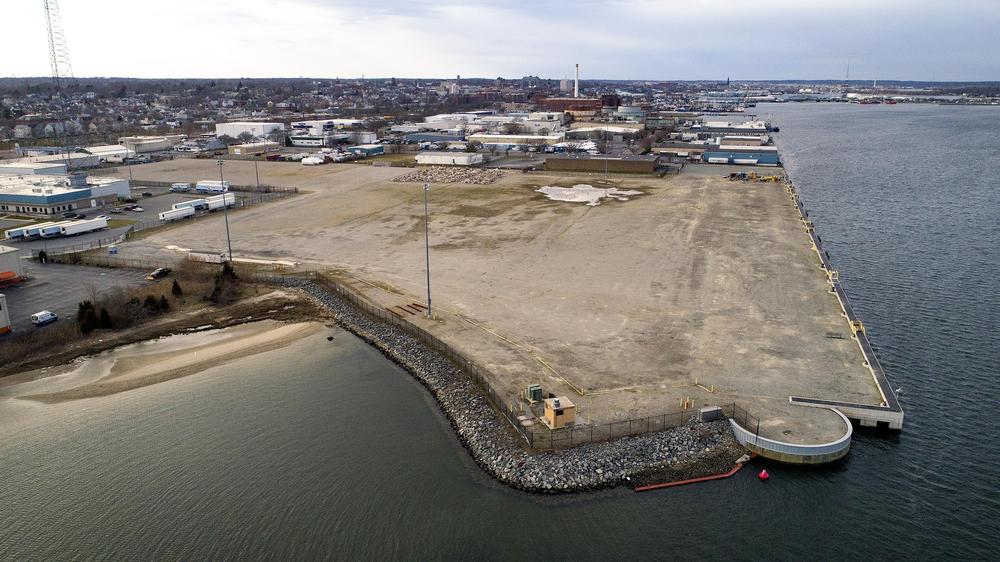Section Branding
Header Content
Biden Administration Approves 1st Major Offshore Wind Energy Project
Primary Content
The U.S. Interior Department approved the country's first large-scale offshore wind project Tuesday, a final hurdle that reverses course from the Trump administration and sets the stage for a major shift in the energy landscape.
This "is a significant milestone in our efforts to build a clean and more equitable energy future while addressing the climate emergency," Interior Secretary Deb Haaland said during a press briefing. She said an expansion of wind energy is critical to President Biden's ambitious climate goals to make the electricity sector carbon-neutral.
The $2.8 billion project, known as Vineyard Wind 1, will consist of 62 turbines spaced about a mile apart, each standing about 837 feet above the water's surface. Cables buried beneath the ocean floor will connect the power from these turbines with the New England grid onshore.
The project is expected to produce enough renewable electricity to power 400,000 Massachusetts homes every year while also saving ratepayers billions of dollars and reducing annual carbon dioxide emissions in the state by about 1.68 million metric tons.
Lars Pedersen, Vineyard Wind's CEO, recently told public radio station WBUR that he expects offshore construction to begin next year, with renewable energy flowing to the grid by the end of 2023.
Pederson called Vineyard Wind's approval "the launch of a new industry." More than a dozen wind farms are being developed in federal waters off the East Coast, and states along the seaboard are eager for the economic development that could bring.
In March, the Biden administration announced a national goal of installing 30 gigawatts of offshore wind capacity by 2030. According to the White House, hitting this target would create thousands of jobs and provide enough clean electricity to power about 10 million homes in the U.S. every year.
It's an ambitious target for a nascent industry that has lagged far behind its European counterpart. The U.S. currently has just seven wind turbines in the Atlantic Ocean, off Rhode Island and Virginia. Europe, by contrast, has more than 5,000.
Fishing industry concerns
Not everyone is celebrating this expansion.
Fishermen worry that large groups of gigantic turbines in the Atlantic will disrupt sea life and their livelihoods. The Responsible Offshore Development Alliance, which represents the New England fishing industry, said it "condemns in the strongest possible terms" the project's environmental review.
Fishermen's concerns have been met with "silence," said Anne Hawkins, the group's executive director, "a clear indication that those in authority care more about multinational businesses and energy politics than our environment, domestic food sources, or U.S. citizens."
Both Vineyard Wind and federal officials said they have considered the industry's concerns and made modifications. Vineyard Wind, for instance, altered the spacing and orientation of its turbines. But fishermen had asked for more spacing between turbines and a 4-mile transit lane through the federal lease area.
Tuesday's announcement likely marks the end of the fight over Vineyard Wind, but several other projects are in the federal review pipeline right behind it. According to a report from the American Clean Power Association, East Coast states have so far pledged to build 25 gigawatts of offshore wind capacity by 2035.
NPR's Jennifer Ludden contributed to this report.
Copyright 2021 WBUR. To see more, visit WBUR.
Correction
A previous version of this story incorrectly said there are seven wind turbines off Rhode Island. Two of them are actually off Virginia.


